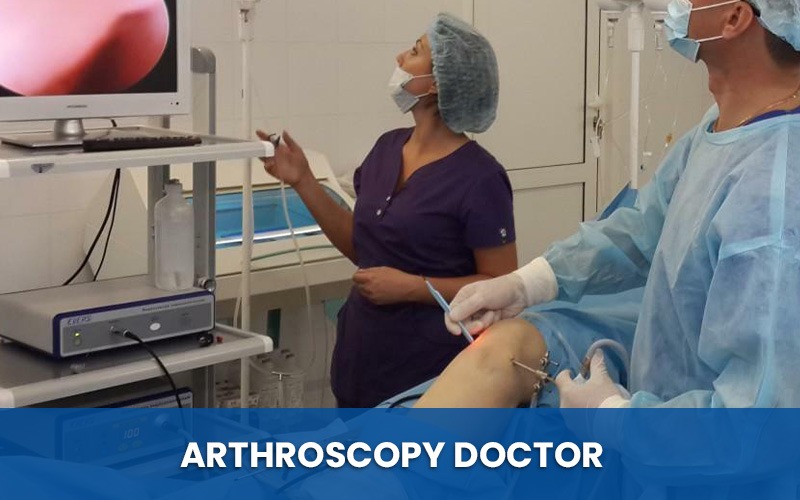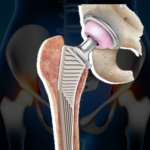
Arthroscopy is a minimally invasive surgical procedure that is commonly used to diagnose and treat a variety of joint problems, particularly those affecting the knee, shoulder, hip, and ankle. In this blog post, we will provide an in-depth overview of arthroscopy, including what it is, how it works, what conditions it can be used to treat, and what to expect during and after the procedure.
What Is Arthroscopy?
Arthroscopy is a type of surgical procedure that involves the insertion of a small, flexible camera called an arthroscope into the joint through a small incision. The arthroscope is connected to a video monitor, which allows the surgeon to see inside the joint and examine the structures, such as the cartilage, ligaments, and tendons, in detail. This allows for a more accurate diagnosis of joint problems than traditional imaging techniques such as X-rays and MRI scans.
In addition to diagnosis, arthroscopy can also be used to perform minimally invasive surgical procedures to treat a variety of joint problems, such as repairing torn ligaments and removing damaged tissue.
What conditions can be treated with arthroscopy?
Arthroscopy can be used to diagnose and treat a variety of joint problems, including:
- Meniscus tears: A meniscus tear is a common injury that occurs when the cartilage in the knee joint is torn. Arthroscopy can be used to remove torn cartilage and repair any damage to the surrounding tissue.
- Anterior cruciate ligament (ACL) tears: The ACL is a ligament that helps stabilize the knee joint. A tear in this ligament can cause pain, instability, and difficulty walking. Arthroscopy can be used to reconstruct the torn ligament using a graft from another part of the body.
- Rotator cuff tears: A rotator cuff is a group of muscles and tendons that help stabilize the shoulder joint. Tears in the rotator cuff can cause pain, weakness, and a limited range of motion. Arthroscopy can be used to repair torn tendons and remove any damaged tissue.
- Labral tears: The labrum is a ring of cartilage that helps stabilize the hip joint. Tears in the labrum can cause pain, stiffness, and limited mobility. Arthroscopy can be used to remove the torn cartilage and repair any damage to the surrounding tissue.
- Loose bodies: Sometimes, small pieces of bone or cartilage can break off and float around in the joint, causing pain and inflammation. Arthroscopy can be used to remove these loose bodies.
- Synovitis: Synovitis is a condition in which the lining of the joint becomes inflamed, causing pain and swelling. Arthroscopy can be used to remove any inflamed tissue and restore normal joint function.
Benefits of Arthroscopy
Arthroscopy offers several advantages over traditional open surgery, including:
- Minimally invasive: Arthroscopy involves only small incisions, which means less trauma to the surrounding tissue and a faster recovery time.
- Less scarring: Because the incisions are small, there is less scarring than with traditional open surgery.
- More accurate diagnosis: Arthroscopy allows for a more detailed examination of the joint than traditional imaging techniques, which can lead to a more accurate diagnosis and treatment plan.
- Reduced risk of complications: Because arthroscopy is a minimally invasive procedure, there is a lower risk of complications such as infection, bleeding, and blood clots.
What to expect during the procedure?
Before the procedure, the patient will be given anaesthesia to ensure that they are comfortable and pain-free during the procedure. Depending on the joint being examined or treated, the patient may be positioned lying down, on their side, or sitting upright. The surgeon will make one or more small incisions near the joint and insert the arthroscope, which is connected to a video monitor.
The surgeon will then use small surgical instruments to examine the joint and, if necessary, perform any necessary repairs or remove any damaged tissue. Throughout the procedure, the surgeon will be able to see the joint on the video monitor and make any necessary adjustments.
After the procedure, the patient will be taken to a recovery room where they will be monitored until the effects of the anesthesia wear off. Most patients are able to go home the same day as the procedure, although some may need to stay in the hospital overnight for observation.
Arthroscopy is a safe and effective procedure for diagnosing and treating a variety of joint problems. It offers several advantages over traditional open surgery, including less scarring, a faster recovery time, and a reduced risk of complications. If you are experiencing joint pain or mobility issues, talk to your doctor about whether arthroscopy may be a good option for you. With proper care and rehabilitation, arthroscopy can help you regain mobility and improve your quality of life.
Expert Arthroscopy Treatment with Dr Saurabh Giri
Dr Saurabh Giri is a renowned arthroscopy doctor who specializes in the treatment of joint and bone-related issues. With over 10 years of experience in the field of arthroscopy, Dr Giri has treated thousands of patients with various joint-related problems, providing them with exceptional care and treatment. Dr Giri is a skilled surgeon who has performed numerous successful surgeries for conditions such as meniscus tear, ACL tear, cartilage injuries, and shoulder dislocation, among others. He uses advanced surgical techniques to minimize the risk of complications and ensure a speedy recovery for his patients. One of the unique features of Dr Giri’s clinic is his emphasis on patient education. He takes the time to explain the patient’s condition, the available treatment options, and the potential risks and benefits of each approach. He also provides his patients with comprehensive post-operative care instructions to ensure a smooth recovery. Dr Giri is a highly skilled and dedicated arthroscopy doctor who provides exceptional care and treatment to his patients. His vast experience, coupled with his commitment to patient education and welfare, makes him one of the most sought-after arthroscopy doctors in the country.




